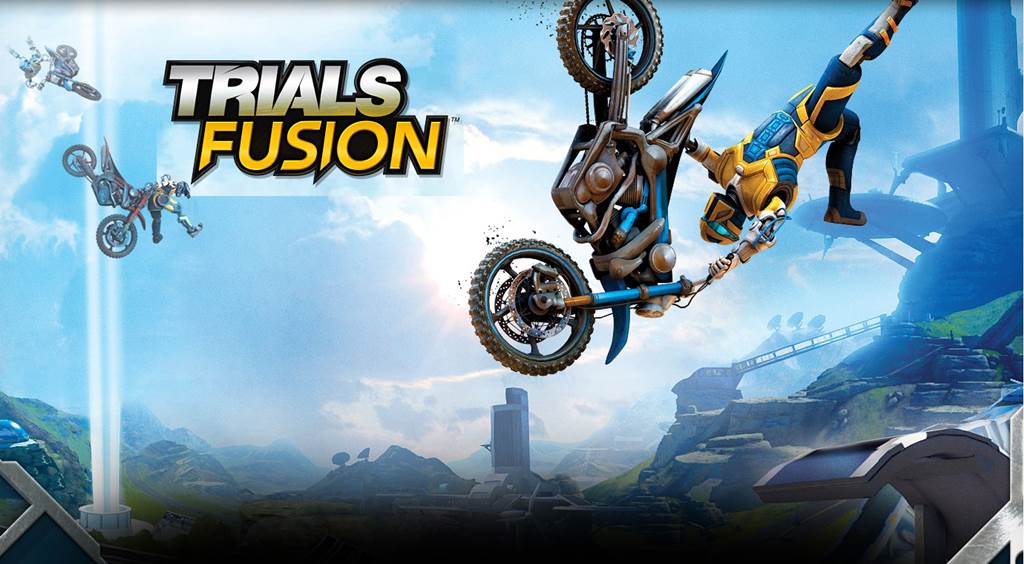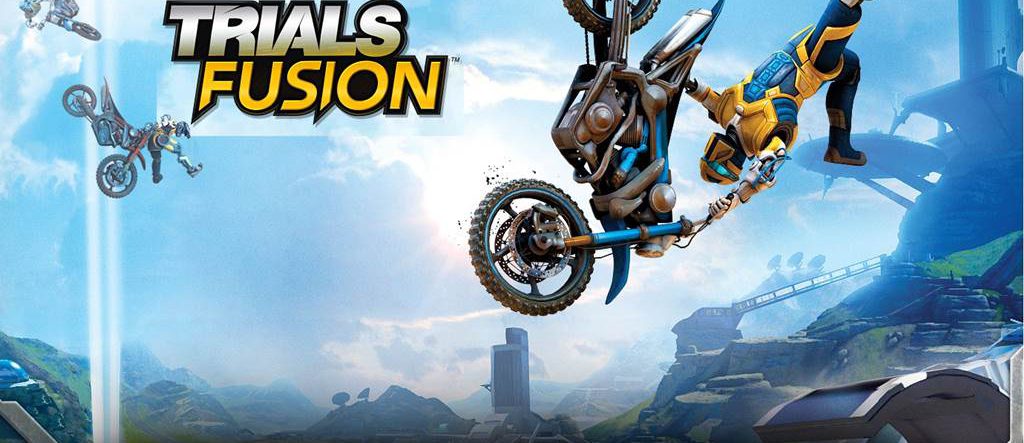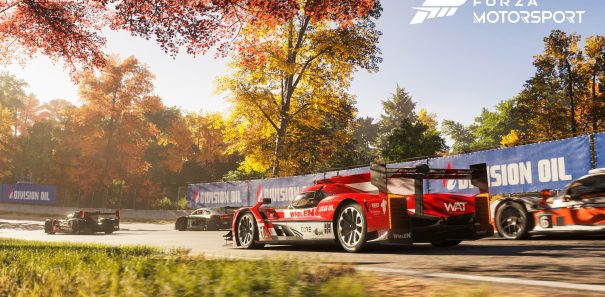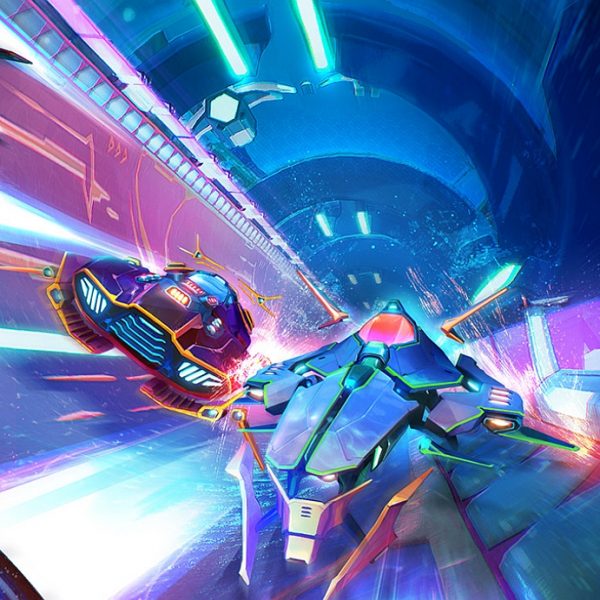Trials is a series you love to hate. It’s fun but frustrating; challenging but rewarding. Its winning formula of madcap biking and platforming nails that “just one more go” lure better than any other game I can think of, as you try and fail to climb that final hurdle for the 200th time. Literally.
It drives you to despair to the point that playing it with a swear jar would reduce you to poverty. And yet, somehow, you always end up coming back for more. Suddenly, all that pain you endured subsides with a tremendous sense of accomplishment when you finally figure out how to beat that one obstinate obstacle – even if it came at the cost of your dismembered controller, which you abused like a well-worn stress ball.
What started as a humble internet flash game transformed into one of the most acclaimed titles on Xbox Live with Trials HD, despite its notorious difficulty. Its sequel, Trials Evolution, propelled the series to stardom, taking the Trials template and cranking everything up to 11, adding more varied levels, online multiplayer and an advanced level creator that’s since spawned a staggering number of user-created levels.

Two years later, we have its inevitable follow-up: Trials Fusion. It certainly has a lot to live up to in the shadow of Trials Evolution – particularly as this entry in the series is reaching a wider audience than ever before in an ambitious cross-platform launch.
Ubisoft’s acquisition of RedLynx has enabled long-deprived PlayStation owners to join in the fun and fury for the first time, as Trials Fusion bunny hopped onto PS4, as well as Xbox One (which picked the short straw with its inferior 900p resolution) and its home platforms on Xbox 360 and PC simultaneously. On top of this, Trials Fusion is the first game in the series to be granted a full boxed retail release, extending its reach even further. Who would have thought an indie game developed by a small Finnish studio would end up sitting on shelves next to chart-toppers like Call of Duty?
It would have been easy for RedLynx to ride on Trials Evolution’s success and pedal out a sequel that simply offers more of the same. And, in many ways, that’s exactly what Trials Fusion does: this is still the very same Trials you love to hate. Clearly, RedLynx have adopted a “if it ain’t broke, don’t fix it” attitude. And, quite frankly, who can blame them at this point?
Back to the future
Indeed, Trials Fusion doesn’t stray too far from the series’ tried-and-tested formula. As ever, your objective is to get your bike from A to B as quickly and faultlessly as possible through a series of increasingly taxing 2D platform levels, using the trigger to accelerate and the left stick to control the rider’s lean. Getting the balance right is a test of skill, patience and precision, requiring serious mastery of the controls to tackle some of the later levels. It’s a testament to the proficiency of the physics that you’re able to defeat some of the seemingly impossible obstacles the game throws at you – every minute input from the controller accurately translates on-screen, creating a tangible and satisfying sense of connection.

That’s not to say there aren’t any notable changes, however. Initially, the most striking change is the setting. Trials Fusion takes place in a futuristic environment, swapping Evolution’s colourful countryside for Sci-Fi-esque, neon-lit cityscapes that look like the Star Wars’ planet of Coruscant. It loves beating you to death with its future setting, too: the cheesy “welcome to the future” theme that introduces the game every time you boot up will inevitably make your ears bleed.
There’s even an attempt at a loose narrative for the first time in the series, as a pair of Portal-esque AI voiceovers commentate on your progress in a dubious attempt at comic relief. Suffice to say, the regular one-liners aren’t particularly amusing and quickly become grating, particularly when the same inane dialogue is repeated every time you restart a section. Honestly, you’d do well in shutting them off, although you will miss out on learning some of the context of the setting.
Admittedly, I was worried that the space age aesthetic would feel too forced and gimmicky and eradicate the series’ inherent charm. Thankfully, the talented team at RedLynx seemingly haven’t exhausted their creativity, as Trials Fusion offers some of the most imaginative, intricate and elaborate courses featured in the series yet.
Once you pass the first selection of levels set in the heights of a futuristic city, you’ll soon be riding on familiar ground, from lush jungles and dense deserts to crumbling ancient ruins. Next-gen graphical flourishes, such as new rain weather effects, also help inject some character into each level, but texture pop-in sadly still persists on instant restarts – a re-occurring blemish you would expect to be fixed by now.
But it’s the scope that’s had the most obvious visual upgrade. Some of the earlier high altitude levels in particular have a dizzying sense of scale, deliberately designed to give you as much airtime as possible as you leap over skyscrapers, hop onto moving blimps and negotiate precarious moving platforms. Meanwhile, sprawling spaceships soar past in the background and moving traffic can be seen clogging the streets below from up above. There are also an abundance of dynamic destruction set-pieces, from collapsing buildings obstructing your path to a dam bursting its banks. If you want spectacle, Trials Fusion has it in spades.

It’s a shame, then, that some of the later levels don’t match the high speed thrills and eye-popping spectacle of the earlier stages, swapping vibrant, vast environments rife with jumps, loops and glorious uninterrupted speed runs, for smaller, slower technical stages. You expect the difficulty to gradually ramp up, of course, but the plodding pace dilutes the fun factor.
The level variety isn’t as potent or memorable as Trials Evolution’s eclectic environments, either. Part of the appeal of Trials Evolution was that you never knew where it was going to take you next, with levels ranging from the beaches of Normandy and a riveting rollercoaster, to an inspired tribute to Limbo. In contrast, Trials Fusion’s attempts to shake things up are saddled by its adherence to its futuristic theme.
The 50+ levels are divided into eight tiers, with compulsory tutorials that do a good job of easing in newcomers, teaching the basics before filling you in on advanced techniques that are instrumental for passing some of the more grueling levels. Trials veterans, on the other hand, will likely be infuriated that they’re being taught how to suck eggs. It’s fair to say that expert players will blitz through the earlier levels with ease – some levels can be completed in as little as 30 seconds. The upshot is a learning curve that’s accessible to newcomers, but that’s not to say veterans are in for an easy ride as the difficulty spikes significantly around two thirds of the way through.
And if the harder levels still don’t phase you, you better brace yourself for the after-credits Extreme levels, which wholeheartedly deserve their title: defeating each individual obstacle is an almighty achievement in itself. A maximum 500 allotted attempts to complete each level may sound generous, but you’d be surprised how quickly you will use them all up in the excruciating Extreme levels. It’s a serious test of skill, judgement and, at times, luck, that only the most patient of players will endure.
Leaderboards remain Trial’s primary hook – and I’m not just talking about online global leaderboards. Trials makes things more personal by facing you off against up to three ghost riders representing your friend’s best performance during their run on the same level. It’s a staple of Trials; a simple but effective mechanic that makes you push that little bit harder to shave off vital seconds all in the name of social bragging rights.
Try, try again
Of course, trial and error is the essence of Trials, where it’s not uncommon to repeat some sections literally hundreds of times thanks to the aid of the instant restart button. Mercifully, Trials Fusion gives you some extra incentive to repeat levels beyond simply improving your times.
In addition to the standard bronze, silver gold and platinum medals up for grabs, each level has three specific challenges for you to tackle, ranging from simple no-fault runs and performing a set number of flips, to uncovering well-concealed secret paths that utilise the unique design of each level.
There’s even a stash of quirky mini-games to unlock, including, wait for it…penguin tennis. Adding challenges was a smart design decision that encourages you to explore the tracks thoroughly, whilst easing the repetition of the traditional Trials gameplay by diverting your focus, allowing you to experience levels you will have played to death in new ways. It’s a completionist’s worst nightmare.

Skill games also return, with each tier culminating in a light-hearted mini-game that usually results in your rider enduring copious amounts of pain.
What were previously throwaway distractions have blossomed into genuinely entertaining mini-games that hold their own as a welcome break from the relentless platforming, and you start to look forward to them after slogging through a perpetually punishing level. The Triathlon skill game is a particular highlight, combining long jumps, high jumps and bunny hops.
Old dog, new tricks
Chief new addition to the series is the FMX mode, which incorporates freestyle tricks into the traditional Trials formula. It’s a brave move from the developers that caused a lot of outcry upon its announcement. But do not despair, Trials purists: RedLynx hasn’t gone all Tony Hawks on us just yet. In fact, Skate’s trick system is a more apt comparison.
Tricks are executed by swiping the right stick to tilt the rider’s legs – move the stick to the left in mid-air, and your rider will perform a daredevil superman pose, for example.
Fortunately, they’re also used sparingly. Pulling off tricks is entirely optional during standard levels, but are put into practice in a handful of dedicated FMX levels require you to chain together combos to achieve high scores. While you have to applaud RedLynx for attempting to expand the Trials formula, the execution feels loose and unwieldy in contrast to the game’s tight and resolutely responsive controls, making it difficult to time a trick and land it successfully. The dedicated FMX tracks also feel uninspired by comparison; a repetitive series of jumps and loops that serve their purpose, but nothing more. Adding tricks to Trials was an interesting experiment, but you can tell RedLynx aren’t completely confident in their conviction.
Likewise, the new Quad bike, which is reserved for a handful of levels, feels decidedly out of place. Its heavier weight requires you to employ different tactics of control, but the levels have been simplified to accommodate for its sluggish performance, which disturbs the flow of the career somewhat. The BMX from the Trials Evolution Origin of Pain expansion also returns, and is a surprisingly viable substitute to some of the more feisty bikes that lends itself well to certain tracks.
You could say that the futuristic setting serves as a metaphor for RedLynx’s long-term vision for the series. The track creator, for example, which debuted in Trials Evolution, has been bestowed with an even more advanced tool-set for talented players with far too much time on their hands to muster. There is already a huge wealth of quality content waiting to be discovered, and RedLynx regularly promote their handpicked favourites that are worthy of your attention to keep you coming back for more. RedLynx knows that it’s the community that will ultimately keep the game alive for months to come, much in the same way as LittleBigPlanet, Minecraft and Trackmania.
But that hasn’t stopped the developer from lending a hand. Indeed, RedLynx have already outlined their future DLC plans, with no less than six themed expansions on the horizon between now and May 2015, which can be bought in bulk for a discount with the aid of a customary season pass (which also comes bundled with the boxed version of Trials Fusion). While we welcome RedLynx’s devotion to post-release support, it leaves you with the feeling that Trials Fusion is the foundation for future building blocks, particularly as the campaign felt shorter than Trials Evolution.
Consequently, you’re left with a game that, while still substantial in scope, feels incomplete right now. The fact that online tournaments have only recently been added doesn’t help matters, and online multiplayer is still curiously absent, which is bewildering when it was a key selling point for Trials Evolution. Local multiplayer for up to four players is still available, but it hardly compares.
Trials Fusion isn’t the revolutionary leap forward for the series that Trials Evolution was, but it’s still a worthy sequel to one of the most chronically addictive games on the market, with just enough new features to freshen up the familiar formula – even if they threaten to offset the delicate balance at times.
RedLynx have done it again: love it or loathe it, this is the quintessential Trials experience, now available to a much broader audience to enjoy and curse at in copious amounts – and we wouldn’t have it any other way. But if another sequel is set to spawn, RedLynx will need to spice things up to prevent this loving marriage from becoming stale.
Our Review
Summary
Trials Fusion isn’t the revolutionary leap forward for the series that Trials Evolution was, but it’s still a worthy sequel to one of the most chronically addictive games on the market, with just enough new features to freshen up the familiar formula – even if they threaten to offset the delicate balance at times. RedLynx have done it again: love it or loathe it, this is the quintessential Trials experience, now available to a much broader audience to enjoy and curse at in copious amounts – and we wouldn’t have it any other way. But if another sequel is set to spawn, RedLynx will need to spice things up to prevent this loving marriage from becoming stale.





























